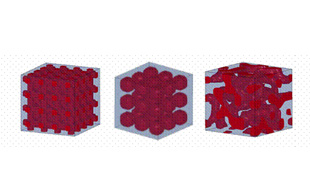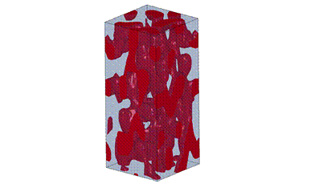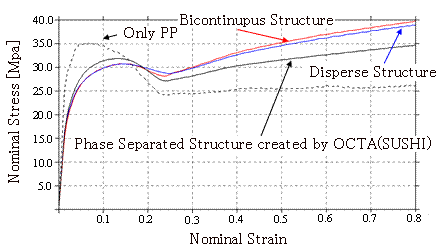Nonlinear Mechanical Properties of Composites (Linked with Ansy LS-DYNA)
Deformation analysis using nonlinear Finite Element Method in Ansys LS-DYNA was performed for polymer materials with phase-separated structures obtained using mean-field methods such as SUSHI. The effects of differences in phase-separated structure on mechanical properties were evaluated, and changes in stress–strain behavior were confirmed
Use Cases Highlights
- Evaluation of the effect of phase-separated structures on mechanical properties
- Nonlinear analysis using Ansys LS-DYNA
- Export capability from J-OCTA to nonlinear finite element software
Comparison of phase-separated structures
Three types of phase-separated structures — bicontinuous, spherical dispersed, and complex structures from the SUSHI mean-field method — are shown, all at the same volume fraction, for mechanical property evaluation.

Comparison diagram of phase-separated structures
Deformation calculation using nonlinear Finite Element Method
Deformation analysis using Ansys LS-DYNA was performed on the phase-separated structure obtained by the SUSHI mean-field method. Time evolution calculations allow visual confirmation of deformation behavior.

Snapshots of deformation calculation
Evaluation of stress–strain curves
Stress–strain curves for the entire material in each structure are shown. Differences in mechanical response due to differences in phase-separated structures are clearly apparent.

Comparison of stress–strain curves
Reference
[1] "Applied Research Project AMUSE" https://octa.jp
Details of analysis
Inquiries Regarding Products
Have questions about product implementation? Contact us today.





